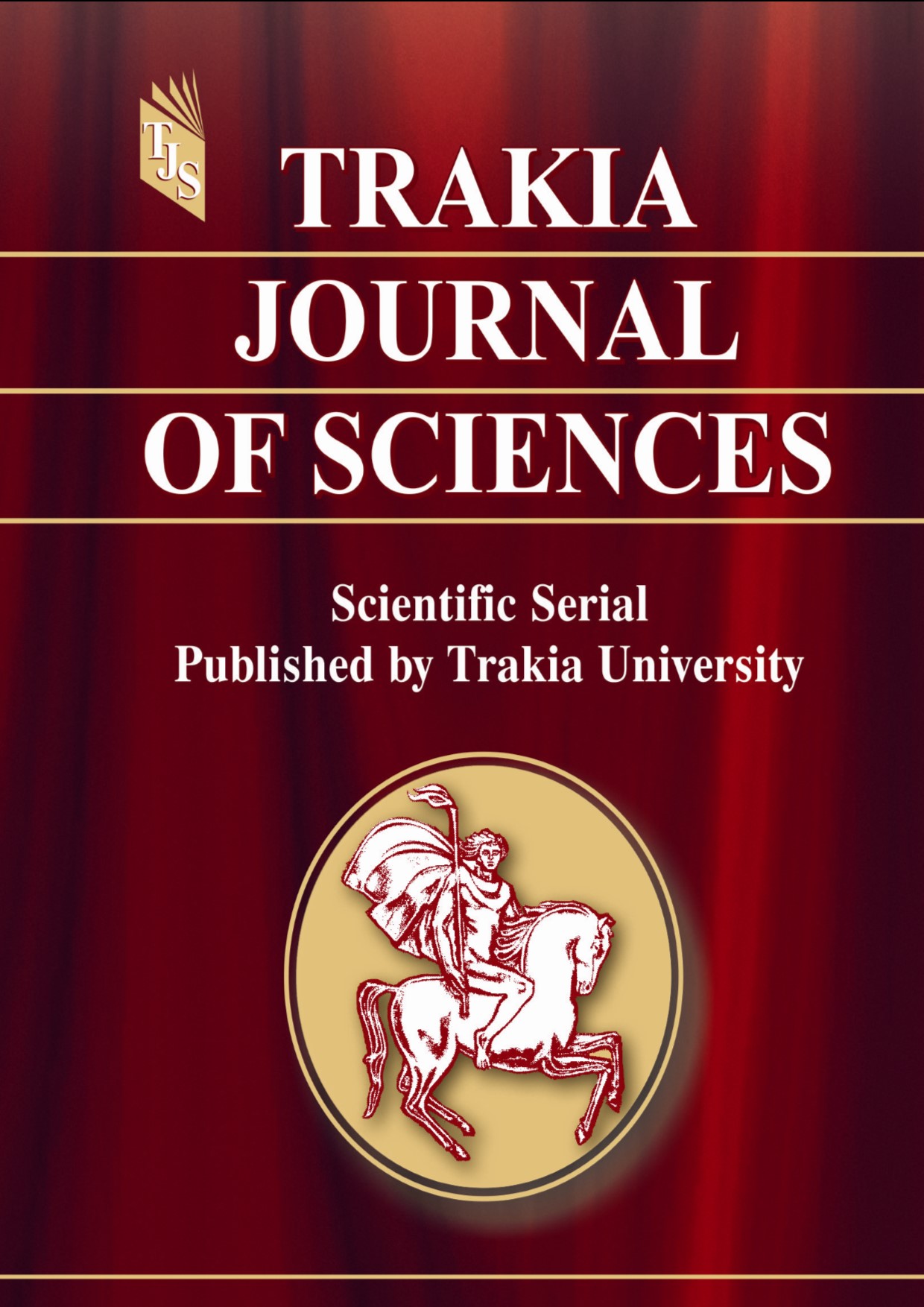CONCEPTS ON ASYMPTOMATIC BACTERIAL VAGINOSIS
DOI:
https://doi.org/10.15547/tjs.2024.03.006Keywords:
bacterial vaginosis, bacterial biofilm, asymptomatic, metronidazole, antibiotic resistanceAbstract
Bacterial vaginosis is a state of imbalance of the vaginal microbiota with prevalence of anaerobes and a relative lactobacilli deficit. The main pathogens are Gardnerella vaginalis species of heterogeneous phenotypic characteristics and virulence, forming a bacterial polymicrobial biofilm on vaginal epithelial cells.
A symptomatic infection clinically manifested by a homogeneous grey-white vaginal discharge with a fishy smell by all means requires a treatment regimen.
The concepts on asymptomatic bacterial vaginosis have not reached a definite consensus regarding the fact whether treatment is required – the interpretation of its sexual transmission is ambivalent and it is unclear whether there are any differences in the pathogenesis and levels of complications between the two clinical manifestations of bacterial vaginosis.
An early therapeutic approach is available for asymptomatic pregnant women; however, it does not demonstrate a significant difference in the incidence of obstetric complications.
Fluctuations and transitoriness in vaginal microbiota composition, manifested by spontaneous transition to verified lack of infection destabilizes the view point that treatment is mandatory in asymptomatic non-pregnant women. Recommendations are available concerning preoperative regimens, prevention of gynaecological and obstetric complications aiming at prevention of sexual transmission and infection with other sexually transmitted diseases.
The treatment approaches to verified bacterial vaginosis involving combined standard and alternative regimens have shown unsatisfactory long-term results, and the evidence so far is insufficient to absolutely confirm or refute the usefulness of treating an asymptomatic infection.
References
Zhang, K., Lu, M. et al. Antibiotic resistance and pathogenicity assessment of various Gardnerella sp. strains in local China, Front Microbiol. 2022 Sep 26:13:1009798.doi: 10.3389/fmicb.2022.1009798. eCollection 2022; www.frontiersin.org
Mendling, W. Martius, J., Hoyme, U B. et al. S1-Guideline on Bacterial Vaginosis in Gynecology and Obstetrics: Long version - AWMF Guideline, r egistration no. 015/028, July 2013 Langfassung - AWMF-Register Nr. 015/028, Juli 2013; Geburtshilfe Frauenheilkd. 2014 Jan;74(1):51-54. doi: 10.1055/s-0033-1360230; www.ncbi.nlm.nih.gov
Muzny, C., Schwebke, J. Asymptomatic Bacterial Vaginosis: To Treat or Not to Treat?, Curr Infect Dis Rep. 2020 Dec; 22(12): 32. Published online 2020 Nov 13. doi: 10.1007/s11908-020-00740-z; National Library of Medicine; www.ncbi.nlm.nih.go
Ma, L., Z., Zhang, Z. et al. Vitamin D deficiency increases the risk of bacterial vaginosis during pregnancy: Evidence from a meta-analysis based on observational studies, Front Nutr. 2022; 9: 1016592. Published online 2022 Nov 22. doi: 10.3389/fnut.2022.1016592; www.frontiersin.org
Zozaya, M., Ferris, M. et al. Bacterial communities in penile skin, male urethra, and vaginas of heterosexual couples with and without bacterial vaginosis. Microbiome. 2016; 4: 16. Published online 2016 Apr 19. doi: 10.1186/s40168-016-0161-6 www.pubmed.ncbi.nlm.nih.gov
Muzny, C., Lensing, S.et al. Incubation period and risk factors support sexual transmission of bacterial vaginosis in women who have sex with women. Sex Transm Infect. Author manuscript; available in PMC 2020 Jun 2.Published in final edited form as:Sex Transm Infect. 2019 Nov; 95(7): 511–515. Published online 2019 Mar 14. doi: 10.1136/sextrans-2018-053824; www.ncbi.nlm.nih.gov
Chee, W., Chew, S. Than , L. Vaginal microbiota and the potential of Lactobacillus derivatives in maintaining vaginal health, Microbial Cell Factories volume 19, Article number: 203 (2020); www.microbialcellfactories.biomedcentral.com
Hilbert, D., Smith, W. et al. Development and Validation of a Highly Accurate Quantitative Real-Time PCR Assay for Diagnosis of Bacterial Vaginosis. J Clin Microbiol. 2016 Apr; 54(4): 1017–1024.Published online 2016 Mar 25. Prepublished online 2016 Jan 27. doi: 10.1128/JCM.03104-15; www.pubmed.ncbi.nlm.nih.gov
O'Hanlon, E., D. Gajer, Pm et al. Asymptomatic Bacterial Vaginosis Is Associated With Depletion of Mature Superficial Cells Shed From the Vaginal Epithelium. Front Cell Infect Microbiol. 2020 Mar 10:10:106. doi: 10.3389/fcimb.2020.00106. eCollection 2020; www.pubmed.ncbi.nlm.nih.gov
Swidsinski, A., Verstraelen, H. et al. Presence of a polymicrobial endometrial biofilm in patients with bacterial vaginosis. PLoS One. 2013;8(1):e53997. doi: 10.1371/journal.pone.0053997. Epub 2013 Jan 8.; www.pubmed.ncbi.nlm.nih.gov
Sobel, J. Bacterial vaginosis: Initial treatment, 2023; Literature review current through: Jan 2024.This topic last updated: Sep 12, 2023; www.medilib.ir
Soper, D., Bacterial vaginosis and surgical site infections. Am J Obstet Gynecol. 2020 Mar;222(3):219-223. doi: 10.1016/j.ajog.2019.09.002. Epub 2019 Sep
Am J Obstet Gynecol, 2020; pubmed.ncbi.nlm.nih.gov
Larsson, PG., Carlsson, B. Does pre- and postoperative metronidazole treatment lower vaginal cuff infection rate after abdominal hysterectomy among women with bacterial vaginosis? Infect Dis Obstet Gynecol. Infect Dis Obstet Gynecol. 2002;10(3):133-40.
doi: 10.1155/S1064744902000133.; www.pubmed.ncbi.nlm.nih.gov
Asymptomatic bacterial vaginosis, 2019; www.health.gov.au; app.magicapp.org/?language=pl#/guideline/jm83RE
Swedberg et al. Comparison of single-dose vs one-week course of metronidazole for symptomatic bacterial vaginosis, JAMA. 1985 Aug;254(8):1046-9; www.pubmed.ncbi.nlm.nih.gov
Joyisa, N., Moodley, D. et al. Asymptomatic Bacterial Vaginosis in Pregnancy and Missed Opportunities for Treatment: A Cross-Sectional Observational Study, Infect Dis Obstet Gynecol. 2019 May 2:2019:7808179.doi: 10.1155/2019/7808179. eCollection 2019.
; www.pubmed.ncbi.nlm.nih.gov
McDonald, HM. Brocklehurst, P. Gordon,A. Antibiotics for treating bacterial vaginosis in pregnancy. Cochrane Database Syst Rev. 2007; (1): CD000262.
Published online 2007 Jan 24. doi: 10.1002/14651858.CD000262.pub3; www.ncbi.nlm.nih.gov
Nygren, P.,Fu, R. Freemanet, M. al. Evidence on the benefits and harms of screening and treating pregnant women who are asymptomatic for bacterial vaginosis: an update review for the U.S. Preventive Services Task Force, Database of Abstracts of Reviews of Effects (DARE): Quality-assessed Reviews 2008; www.ncbi.nlm.nih.gov
Myrhaug, H., Brurberg, K. et al. Treatment of Pregnant Women with Asymptomatic Bacterial Vaginosis with Clindamycin, Report from Norwegian Knowledge Centre for the Health Services (NOKC) No. 11-2010; 2010; www.ncbi.nlm.nih.gov
Owens, D., Davidson, K. et al. Screening for Bacterial Vaginosis in Pregnant Persons to Prevent Preterm Delivery: US Preventive Services Task Force Recommendation Statement. JAMA. 2020 Apr 7;323(13):1286-1292. doi: 10.1001/jama.2020.2684. www.pubmed.ncbi.nlm.nih.gov
Bradshaw, C., Sobel, J., Current Treatment of Bacterial Vaginosis-Limitations and Need for Innovation. J Infect Dis. 2016 Aug 15; 214(Suppl 1): S14–S20.Published online 2016 Jul 19. doi: 10.1093/infdis/jiw159; www.ncbi.nlm.nih.gov
Marrazzo, J. M. ,Thomas K.K.et al. Relationship of specific vaginal bacteria and bacterial vaginosis treatment failure in women who have sex with women, Ann Intern Med. 2008 Jul 1; 149(1): 20–28.doi: 10.7326/0003-4819-149-1-200807010-00006; www.ncbi.nlm.nih.gov

Downloads
Published
Issue
Section
License
Copyright (c) 2024 Trakia University

This work is licensed under a Creative Commons Attribution-NonCommercial 4.0 International License.


